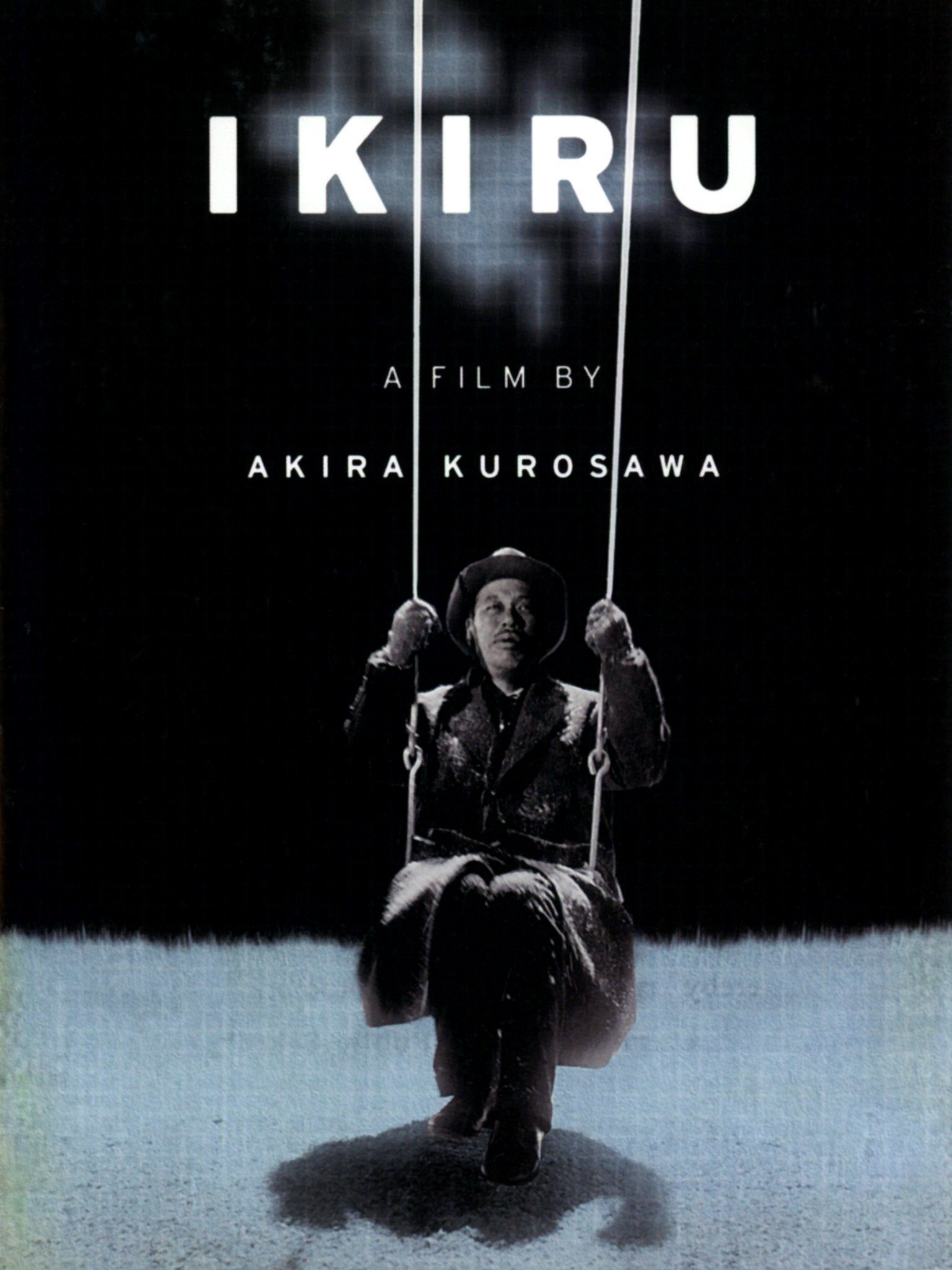Ikiru (1952, dir. Akira Kurosawa, Japan) by Patrick McElroy
Legendary filmmaker Akira Kurosawa once remarked “In a mad world, only the mad are sane.” While this may be true for many of the characters throughout his body of work, the one that it calls to mind most is Kanji Watanabe, the central character of his 1952 drama Ikiru, which turns 70 this month.
In the film, Watanabe is played by Kurosawa regular Takashi Shimura, who’s often the pragmatic wisdom figure. Watanabe works his live as bureaucrat wasting his days in an office. While he’s facing the later part of his life, he gets the news that he’s been diagnosed with stomach cancer, and only has several months to live. After hearing this, he tries to tell his son and daughter in-law, but they’re so caught up in the modern world that they don’t have time for elders, (a theme that Yasujiro Ozu would further explore a year later in Tokyo Story.) This then makes Watanabe not go to work the next day as he explores what to make of life, and how to live it.
Not to give too much away, but halfway through we see Watanabe’s funeral, as his co-workers ponder at the actions he took in the last part of his life. When watching this film, it is unique to see how Kurosawa uses deep focus photography. Early in the film we see Shimura behind his desk, surrounded by papers, showing his life is all work. Then Kurosawa will brilliantly block one or two actors in the foreground, and another in the background to show distance or tension.
In Elia Kazan’s autobiography he lists Shimura’s performance as one of his favorite bits of acting, because it’s one that gives you the truth, and it’s unpredictable. It’s his performance that carries the movie. The film was inspired by Leo Tolstoy’s novella The Death of Ivan Ilyich, which also starts out with the death of a main character, as people reminisce about him.
While this movie was made in Japan, inspired by a Russian story, its themes are universal, for when watching this movie, it also makes the viewer meditate on what to do with their lives, and how to interrupt the cycle we find ourselves in similar to Watanabe. I’ve written before in my pieces on Renoir’s The River, De Sica’s Umberto D., Mizoguchi’s The Life of Oharu, and Rossellini’s Europa 51, about the films made around the world in the decade after WWII that have tried to show the beauty that exists in a world of turmoil, because we’ve been living in times of great adversity.
When viewing these films you still sense their urgency, and they still offer a glimmer of hope when the world seems bleak. Kurosawa’s daughter once compiled a list of his favorite movies, and it included Frank Capra’s It’s a Wonderful Life, which is a film that I feel shares a strong kinship with Ikiru, for both films are about the difference a person can make in their daily lives, and we leave them with the desire to do better.
Patrick McElroy is a movie writer and movie lover based in Los Angeles. Check out his other writing at: https://www.facebook.com/patrick.mcelroy.3726 or his IG: @mcelroy.patrick


